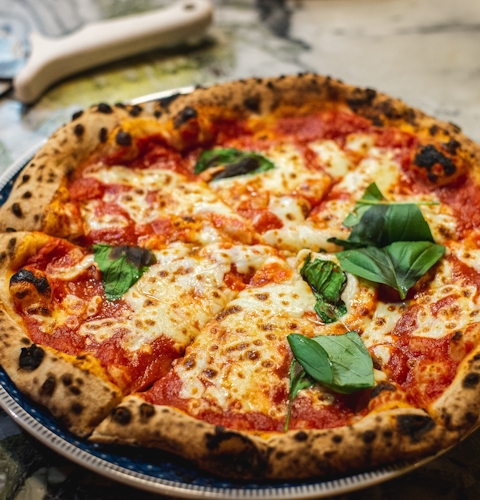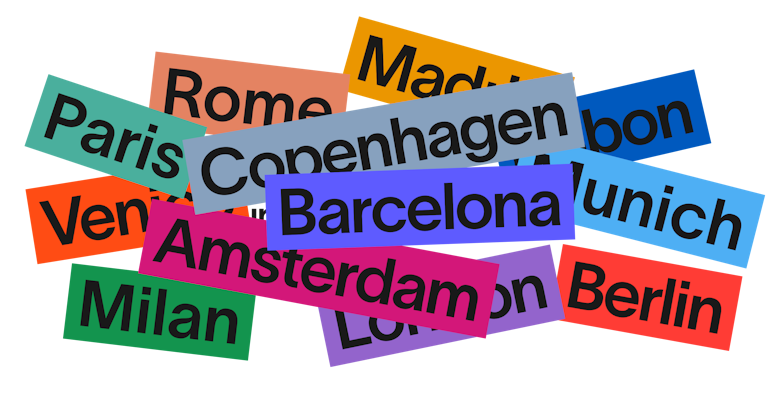
Feast without the Fiasco!
A Newbie's Guide to Eating in Italy!
03/2022 - Sahar Saini
Let's start with the basics—How to avoid tourist traps.
The further away you eat from a tourist site, the less likely you are to be ripped off! Sadly, as in any country, tourists can be seen as prey in some less-than-honest Italian establishments. This is because restaurants and cafes, located near tourist hotspots, don’t need to cater to loyal, local customers. The constant flow of visitors means the hospitality industry can get away with bigger prices. For example, the view of Rome’s Piazza Navona is lovely but dining at a nearby restaurant can be pretty expensive!
Overly expensive places tend to be around famous piazzas, like Rome’s Piazza Navona or Venice’s St. Mark’s Square. A rule of thumb: be on guard whenever you see as many non-Italians as Italians. Other clues are: there’s a “host” outside the door persuading you to come in (any Italian restaurant catering to locals won’t have this, since they’ll rely on word-of-mouth), there’s a menu with pictures, or there’s a big sign that says “Tourist Menu” or even “No service!” or “No cover charge!”
Know what you do and don’t have to pay for while eating at a restaurant.
Don’t worry, I've asked all the questions for you. Yes, you do have to pay for water. However, you can ask for “acqua dal rubinetto”, tap water, but it’s often seen as a bit rude. Plus, those glasses of tap water will take ages to get refilled by your waiter, if they’re refilled at all! At moderately-priced places, a large bottle of mineral water for the table should cost no more than 2 euros, maybe 3 in more expensive cities like Venice. And yes, you do also have to pay for bread. This is the “pane e coperto” charge. Yes, you do have to pay for that antipasto or Foccacia, even if the waiter offered it rather than you ordering it outright. And yes, you have to pay for that digestivo of limoncello or amaro or grappa. Well, sometimes. How to tell? If the waiter offers you an after-dinner drink before he’s brought the bill, you’ll probably be charged. If he asks you if you want one after bringing the bill and/or you’ve paid, it’s perhaps a little “thank you” on the house.
I wouldn’t sit down at an Italian café unless my feet were absolutely killing me.
Avoid sitting down in the kind of place that Italians call a “bar” and we call a “cafe.” Why? Because as soon as you sit down, the price of whatever you’re eating doubles, triples, or worse. That’s why you see Italians usually taking their coffee and cornetti standing up. The cost of coffee in Rome is capped at a set maximum price, so regardless of your location, a standing coffee won’t be too expensive. So, drink coffee standing up at the bar, as the Italians do!
How to not get ripped off if your feet are really killing you.
Before you decide to sit down, order something or make yourself comfortable at the table, always look at the prices usually listed above the counter as you walk in. In most cases, there is one column for “banco” and one for “tavolo”. “Banco” is the price if you stand at the bar; “tavolo” is if you’re sitting. If it’s still worth it to you, then, by all means, sit, but keep in mind roughly what those prices were and be sure to double-check the receipt to make sure they match up.
Don’t leave your order up to the waiter.
Sometimes, waiters will ask if you would like an antipasto for the table. Most of the time, this is fine. Occasionally, though, the antipasto winds up costing an arm and a leg, and you don’t realise it until you get the bill. In many cases, the waiter/waitress would assume that as the traveller, you’d like the best, but it’s wise to know what you’re ordering before you order it. Be specific when you order an antipasto, or it might just keep on coming—at a cost. So, instead of telling the waiter to bring you something, order specifically from the menu, with the quantity you’d like, and be precise. “Vorrei un’antipasto per due”, you could say (an antipasto for two), even if there are four of you.
What about the bill?
When your waiter brings you a bill, make sure it includes a list of the items you ordered (again, ask for “il conto dettagliato” or ““il conto lungo“). Sometimes, restaurants will write a total number down or just say it. In that case, ask for the itemised bill. It’s the only way to know if you’re being charged what you should be.
“Servizio”?
If an item has been added called “servizio”, (probably 10 or 20 percent) that’s “service charge”. You often see this in Venice, the Cinque Terre, and Amalfi coast, and at more tourist establishments in Florence and Rome. Something to know about servizio: although it seems legal, it should be written on the menu. Check the small print at the bottom of pages or on the front or back of the menu. If the servizio hasn’t been written anywhere, ask for it to be taken off if you see it on your bill. If everything about the servizio seems to be as straightforward as possible: i.e. you knew, from looking at the menu, there is a 10% service charge, then it's reasonable to pay it. Remember that this counts as the tip, so you don’t need to leave an additional gratuity.




















